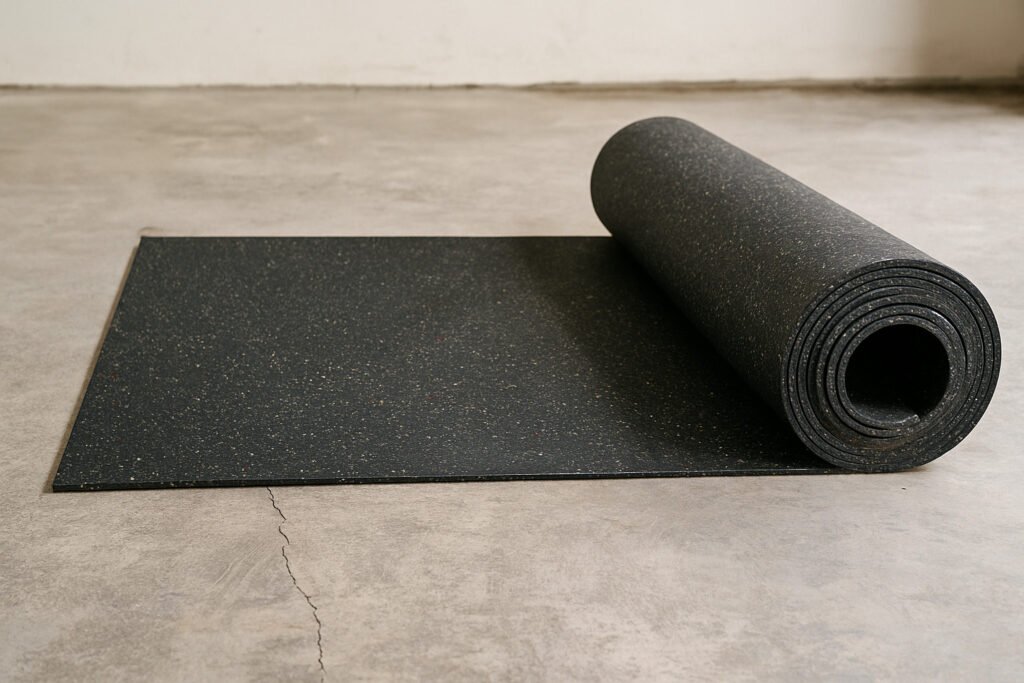2025 Expert’s Guide to Rubber Flooring Rolls for Gyms
Rubber flooring rolls have been a staple in gym design for years, and in 2025, they are more versatile, eco-friendly, and customizable than ever. Whether you’re outfitting a commercial fitness center or upgrading your training studio, the right rubber roll can improve safety, comfort, and the overall workout experience.
In this guide, we’ll cover everything from materials and thickness options to installation and maintenance, so you can make an informed purchase.
What Are Rubber Flooring Rolls for Gyms?
Rubber flooring rolls are continuous sheets of resilient flooring made from SBR (Styrene-Butadiene Rubber), EPDM (Ethylene Propylene Diene Monomer), or blends of both. They are designed for large, seamless coverage in gym environments, providing a professional look and consistent performance.
Typical Specs:
- Width: 1.0m – 1.25m
- Thickness: 3mm – 12mm
- Length: 8m – 15m (customizable)
📌 See examples: Gym Rubber Roll
Key Benefits in 2025
- Seamless Coverage – Creates a clean, uniform surface.
- High Durability – Resists heavy foot traffic and gym equipment.
- Easy Installation & Maintenance – Quick to roll out and clean.
- Shock & Noise Absorption – Protects joints and reduces impact noise.
- Eco-Friendly Options – Low VOC and recyclable materials now available.
For compliance, check for certifications such as EN14041 for resilient floor coverings.
Material Options
| Material | Features | Best For |
|---|---|---|
| 100% SBR | Cost-effective, durable, good shock absorption | Indoor functional areas, cardio zones |
| SBR + EPDM | Colorful, improved UV resistance, customizable patterns | Premium gyms, semi-outdoor spaces |
| Full EPDM | Excellent weather resistance and colorfastness | Outdoor or high-humidity areas |
How to Choose Thickness
- 3–6mm → Yoga, Pilates, light activity areas
- 6–8mm → Cardio zones, functional training spaces
- 8–12mm → Light free weight areas, CrossFit zones
💡 Heavy weightlifting zones should use rubber floor tiles instead for better impact protection.
Installation Methods
- Loose Lay – Ideal for temporary or small spaces.
- Glue Down – Permanent and secure for high-traffic areas.
- Double-Sided Tape – Semi-permanent option for easy repositioning.
Preparation Tips:
- Ensure the subfloor is clean, level, and dry.
- Allow rolls to acclimate to room temperature before installation.
Maintenance & Cleaning
- Sweep or vacuum regularly to remove dirt and debris.
- Mop with a neutral pH cleaner—avoid harsh chemicals.
- Prevent standing water for prolonged periods.
- Inspect seams and edges periodically for lifting.
Buying & Budget Tips
Price Factors:
- Material type (SBR vs EPDM content)
- Thickness
- Custom colors or patterns
- Order quantity (bulk purchasing lowers cost)
📩 Request a free quote for rubber flooring rolls — samples and shipping options available worldwide.
FAQs – Common Buyer Questions
Q: Are rubber rolls better than tiles?
A: Rolls are ideal for seamless coverage in large areas, while tiles are better for heavy weight zones or spaces needing easy replacements.
Q: Do rubber rolls have an odor?
A: New rolls may have a mild rubber scent, which dissipates quickly. EPDM options have minimal odor.
Q: Can rubber rolls be used outdoors?
A: Yes, but choose EPDM or SBR+EPDM blends for UV resistance and weather durability.
Conclusion
In 2025, rubber flooring rolls offer more design flexibility, eco-friendly materials, and installation options than ever before. Whether for a commercial gym or a boutique training studio, choosing the right material, thickness, and installation method will maximize safety, durability, and value.
📩 Contact Lanhefloor today for expert advice, free samples, and a tailored quote for your gym project.

